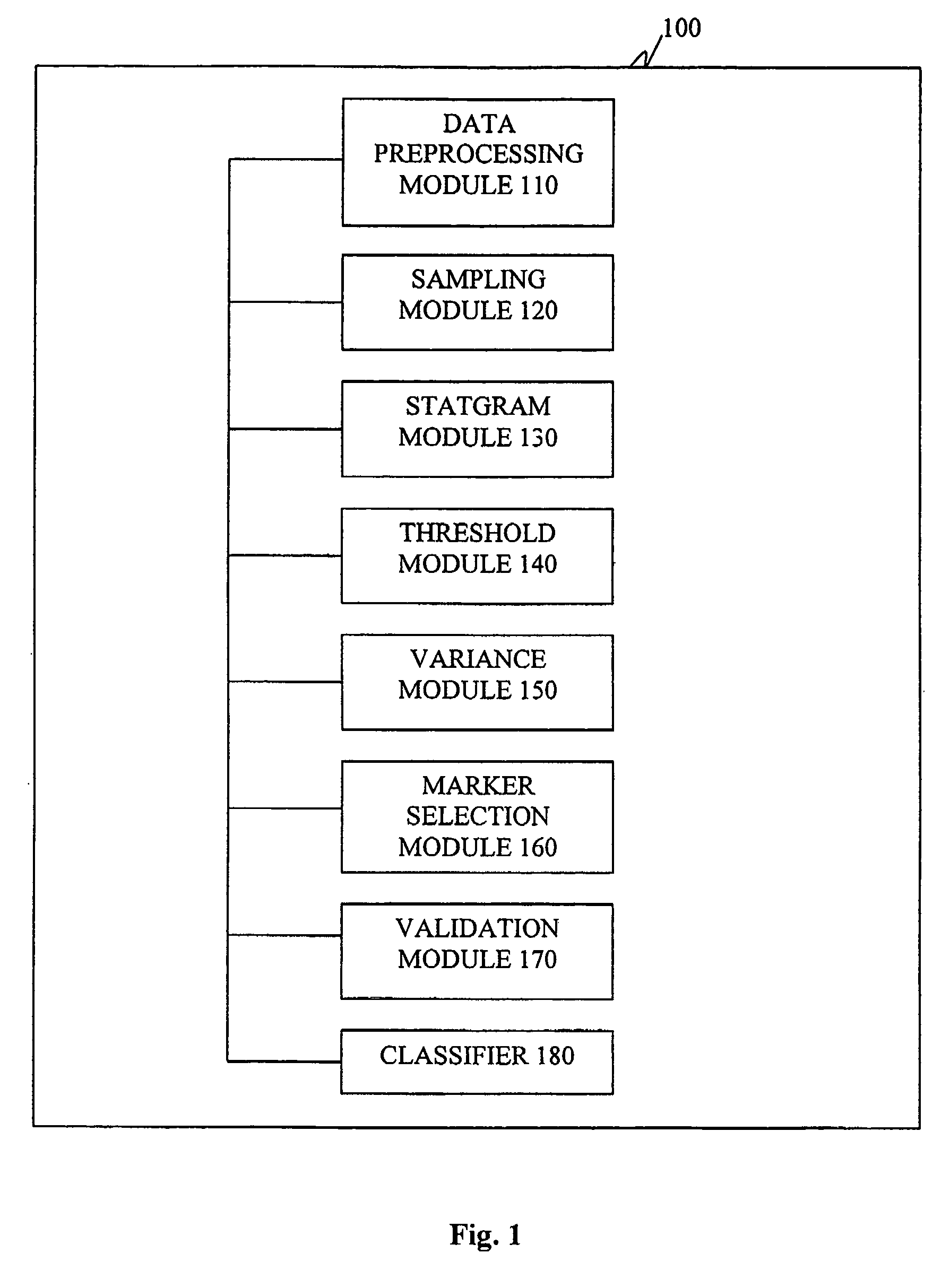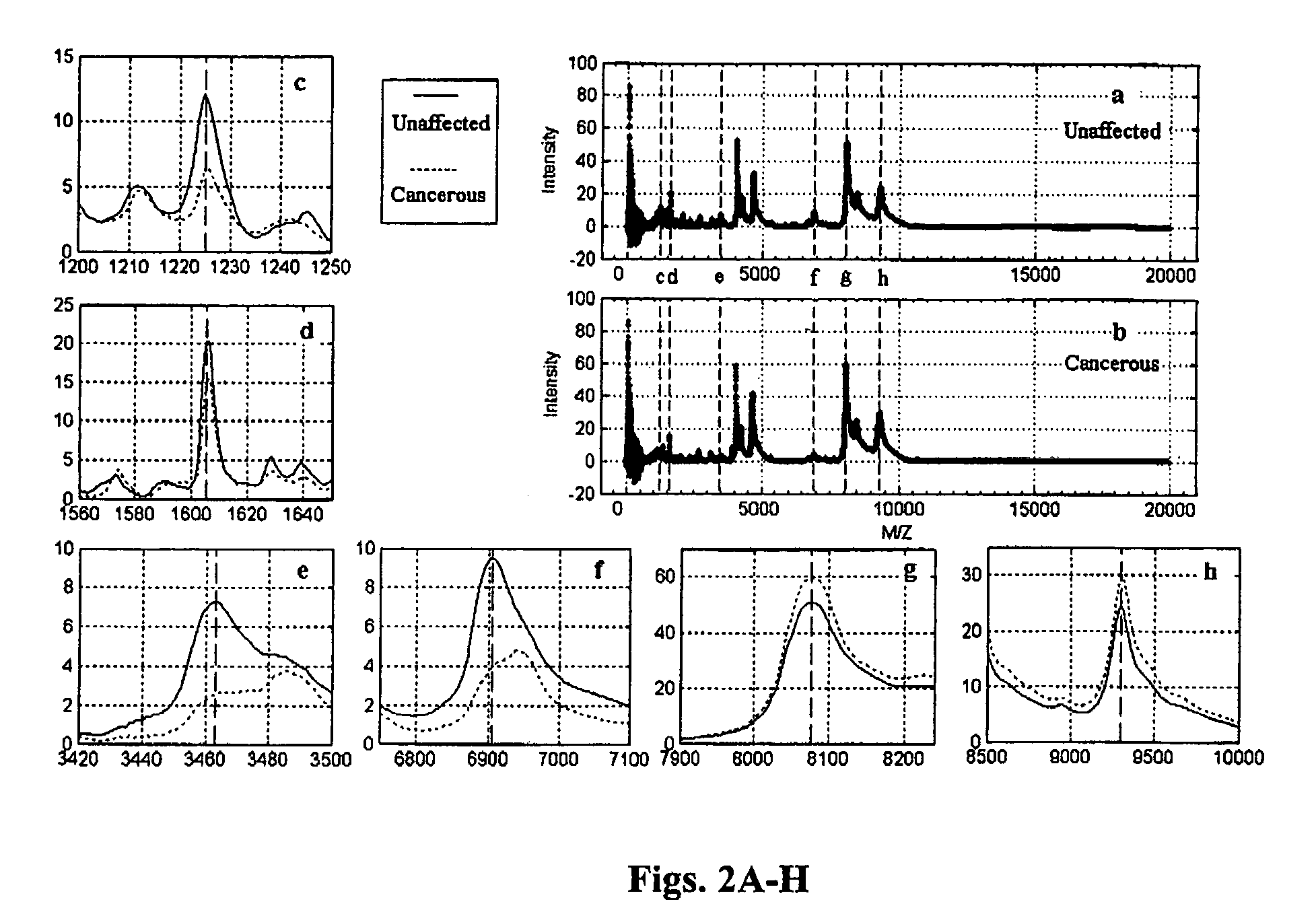Method for detecting discriminatory data patterns in multiple sets of data and diagnosing disease
a data pattern and discriminatory technology, applied in the field of methods and systems for analyzing data, can solve the problems of inability to completely characterize the dataset, inability to effectively screen for early stage ovarian cancer, and inability to apply hidden patterns found in one dataset to other datasets
- Summary
- Abstract
- Description
- Claims
- Application Information
AI Technical Summary
Benefits of technology
Problems solved by technology
Method used
Image
Examples
Embodiment Construction
[0040]The comprehensive statistical method of the present invention can be applied to analyze any type of raw data, including clinical or environmental data where the sample may be, e.g., water, air, soil, serum, blood, saliva, plasma, nipple aspirate, synovial fluid, cerebrospinal fluid, sweat, urine, fecal matter, tears, bronchial lavage, swabbings, needle aspirant, semen, vaginal fluid, pre-ejaculate, etc., to carry out, e.g., screening for contaminants, pathologic diagnosis, toxicity status, efficacy of a drug, screening or prognosis of a disease. In fact, the present invention can be used to analyze any data that can be expressed with common coordinates. That is, the multiple sets of data can be mapped into the same coordinate system, thereby enabling comparison between multiple sets of data. Moreover, the present invention can analyze data from mass spectroscopy, liquid chromatography, two-dimensional gel chromatography, gas chromatography, etc.
[0041]In accordance with an embo...
PUM
| Property | Measurement | Unit |
|---|---|---|
| size | aaaaa | aaaaa |
| mass spectrometer | aaaaa | aaaaa |
| mass | aaaaa | aaaaa |
Abstract
Description
Claims
Application Information
 Login to View More
Login to View More - R&D
- Intellectual Property
- Life Sciences
- Materials
- Tech Scout
- Unparalleled Data Quality
- Higher Quality Content
- 60% Fewer Hallucinations
Browse by: Latest US Patents, China's latest patents, Technical Efficacy Thesaurus, Application Domain, Technology Topic, Popular Technical Reports.
© 2025 PatSnap. All rights reserved.Legal|Privacy policy|Modern Slavery Act Transparency Statement|Sitemap|About US| Contact US: help@patsnap.com



